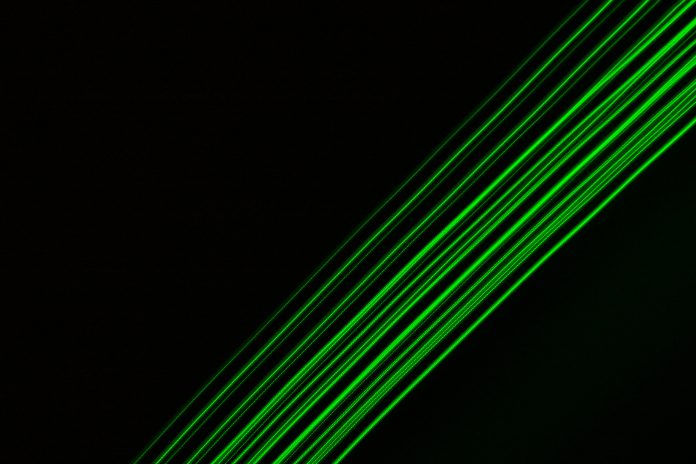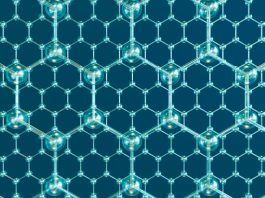Green lasers are redefining what’s possible in modern technology, offering unmatched precision, low thermal impact and high visibility.
Jack Shaw, Writer & Editor at Modded, discusses how green lasers accelerate innovation across sectors, from micromachining and medical imaging to renewable energy and environmental sensing.
Green lasers are powerful tools across a spectrum of advanced technologies. They offer functionalities that traditional laser types often struggle to match as industries seek improved efficiency, sustainability and smaller designs. As a result, they’ve moved beyond research labs and are now integral to commercial innovation.
Tech leaders are starting to see how important green lasers are for sustainability and improving operations. This perspective can influence investment decisions, product development and infrastructure planning.
How do green lasers work?
A green laser emits light at a wavelength of 532 nanometers (nm) in the visible green portion of the electromagnetic spectrum. The light appears more luminous than other colours due to the human eye’s heightened sensitivity to low-light conditions in the green spectrum at wavelengths of 520–570 nm. In contrast, sensitivity diminishes for red and blue wavelengths. This characteristic contributes to their widespread use in applications that require high visibility and precision targeting.
Powering performance with rechargeables
Although green lasers greatly enhance visibility, they come with a major trade-off — their energy consumption can be up to six times higher than other red lasers. For those relying on AA alkaline batteries, this often means more frequent interruptions, extra spending and the ongoing hassle of sourcing and swapping out batteries.
Many manufacturers are moving toward rechargeable battery systems to address these energy demands without sacrificing performance. With increased capacity and longer operational life, these power sources help users stay on tasks, avoiding the repeated disruptions of battery changes and the need to recalibrate equipment mid-project.
Green lasers in precision manufacturing
Green lasers are a game-changer in micromachining, especially when working with heat-sensitive materials like glass, ceramics, silicon wafers and composite polymers. Unlike infrared lasers, green ones can deliver precise energy with minimal heat diffusion to surrounding material, making them suitable for low-thermal-impact applications, sometimes called “cold processing”.
This capability is essential in sectors such as microelectronics because it provides a shorter wavelength that enables precise, clean cuts while minimising thermal stress. This helps protect delicate electronic components from damage. Also, it provides advantages in photovoltaic applications — especially in laser scribing — by facilitating deep dopant infiltration into silicon and allowing for accurate material processing. This boosts cell efficiency and overall module performance.
Reducing waste and improving yields
The shorter 515 to 535 nm wavelength allows for higher energy and greater precision in beam focusing. Plus, highly reflective metals like copper, gold and silver — which don’t absorb well in the infrared wavelength range — absorb green lasers more effectively.
The beam greatly reduces the reflection from copper surfaces, resulting in up to seven times more energy absorption than typical red lasers. These technologies produce cleaner and superior welds compared to regular fibre lasers. Moreover, they reduce the amount of weld spatter, have a smaller CO2 footprint and consume less power for each weld joint.
Science applications of green lasers
The ophthalmology sector has used green lasers for decades, primarily in retinal photocoagulation procedures. Their wavelength is selectively absorbed by melanin and haemoglobin, which allows for the targeted treatment of blood vessels without affecting surrounding tissues. They are also used in dermatology for vascular lesion treatment and in surgical settings for photodynamic therapy, where they activate light-sensitive drugs to destroy cancerous cells.
Biophotonics and imaging
Fluorescence-based techniques, such as fluorescence microscopy and DNA and RNA sequencing, use green lasers. They align well with common fluorescent markers, providing bright, high-contrast illumination that enhances data accuracy and sensitivity. This makes them indispensable in molecular biology and pharmaceutical research.
Emerging medical technologies
The miniaturisation of green laser diodes unlocks new applications in wearable health monitors, implantable devices and portable diagnostic systems. This technology is key for precisely welding surgical instruments, marking delicate implants and executing minimally invasive surgeries. Start-ups and medical device manufacturers are leveraging this technology to build lightweight, battery-efficient devices capable of continuous monitoring and on-the-spot analysis.
Smart infrastructure, clean energy and data systems
Light Detection and Ranging (LiDAR) is a cutting-edge remote sensing method that uses pulsed laser light to measure distances and create a 3D representation of a specific area. It comes in two primary forms — bathymetric and topographic. Topographic LiDAR uses near-infrared lasers to map land features.
Green lasers are a popular choice for bathymetric LiDAR, as this method relies on a wavelength of 532 nm to assess the elevations of the seafloor and riverbeds in aquatic environments. The capacity of the green laser to penetrate water allows for the measurement of rivers, shallow water reservoirs, and coastal sea waters within three Secchi depths.
This enhances data capture, signal quality and efficiency. The system also has a shorter wavelength, allowing more energy to be concentrated in each pulse, which increases the detection range without compromising data accuracy.
Renewable energy applications
Laser processing can optimise the micro-nano structure of perovskite thin films, boosting free charge transport pathways and improving charge collection efficiency. It influences the nucleation and crystallisation stages, shaping the band structure and creating photo-generated excitons.
This refines the structures of electron transport, hole transport and modification layers, resulting in lower series resistance and improved carrier transport. This fast, powerful, eco-friendly laser processing will significantly impact perovskite photovoltaic cell manufacturing.
The future of green lasers
Technological advancements result in smaller, more efficient lasers that can be incorporated into various devices. These compact lasers can potentially transform areas like medical treatment and underwater communication. Researchers are also investigating their use in quantum computing. If this endeavour proves successful, it could enable use outside of laboratories.
Companies are exploring their integration with AI, IoT and robotics. They look for autonomous inspections, targeted treatments and adaptable infrastructure as lasers become smaller, faster, and more profitable.
To boost efficiency on the job site, newer laser models are beginning to feature Bluetooth connectivity, allowing them to sync with remote controls. This innovation enables users to adjust the laser’s positioning — such as rotating it — without needing to touch the unit after it’s been secured on a tripod or stand. By enabling one-person operation during long layout tasks, these remote functions reduce the need for extra help and speed up the overall setup process.
Lighting the way to smarter systems
Green lasers are transforming from niche tools to essential technology elements due to their ability to handle delicate materials, navigate water and enhance energy transfer in next-generation devices. The convergence of green laser technologies across various sectors — such as compact health technology and smart environmental monitoring systems — paves the way for a new era.
In this one, precision engineering aligns with ecological responsibility, benefiting multiple sectors and society. Green lasers pave the way for cleaner, more precise and better-interconnected technologies, providing business leaders with a unique opportunity to innovate without compromise.









